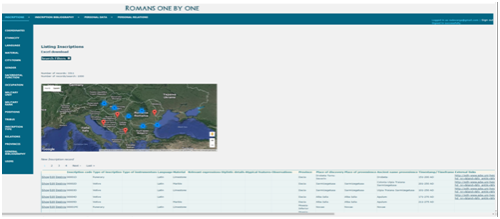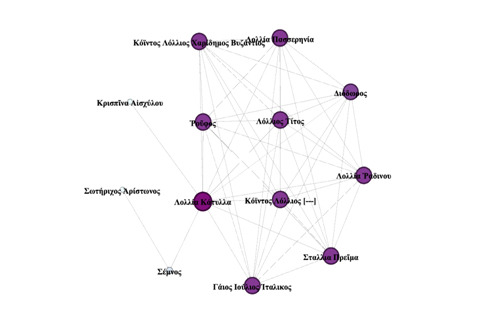
The project Prosopographia Ponti Euxini. Byzantion. I. The Epigraphic Sources (PPEB) had as its goal the achievement of a comprehensive prosopographical study on Byzantion’s population (based on the epigraphic sources),[1] covering the period between the first epigraphic attestations in the city up to the third century CE. Conceptually and methodologically, this project is part of a larger personal project on the prosopography of the ancient Greek cities of the Black Sea and Propontis, on which I will focus in the following years.
More precisely, the intention of my ANAMED fellowship was to gather all the existing prosopographical data for Byzantion and reconstruct the identity of the attested individuals, irrespective of their social status and category. As such, the innovative and original elements aimed to a) achieve a prosopographical work on the inhabitants of/from Byzantion (an updated and more targeted approach than the reference work of L. Loukopoulou, Contribution à l’histoire de la Thrace Propontique, Athens, 1989); b) recreate the relevant networks of the population; and c) promote new research methodologies in the field of ancient history. This latter step was achieved especially by entering the epigraphic evidence into the open access prosopographical database Romans 1 by 1. This step eased the statistical analyses of the existing information, and it made the data available on this open-access platform, enabling both specialist and non-specialist user to browse, filter, and search for specific information, as well as download and further use the data. Additionally, network analyses conducted with the program Gephi (a visualisation tool) were also made for some members of the society who were interconnected beyond their families, such as Λολλία Κάτυλλα (ID 473), daughter of Κόϊντος Λόλλιος [—] (ID 938), from Rhegion. As expected, the nuclear family predominates in inscriptions (including one example of adoption), but in some cases, we can also grasp the more extended family or external networks (mostly through religious or economic pathways).
Some expected challenges were also encountered, such as the biased character of the data and (rarer) cases of homonymy. As expected in all such initiatives, the information is certainly only partial, revealing various blind spots (or “dark numbers”),[2] such as the non-representativeness of specific juridical categories (e.g., slaves, who despite being named in inscriptions infrequently are sometimes represented on funerary monuments as not only part of a funerary motif but also of a demographic reality) or certain age categories (e.g., children, who are most often recorded in inscriptions following their deaths). The available data is also influenced by other aspects, such as the intensity of archaeological research or the specific areas of the city which have been researched. Despite the fact that all such initiatives do not claim to render the number of the real population accurately, which is impossible based solely on epigraphic sources, such an approach is useful because it provides an overview of the existing epigraphic evidence and points to epigraphic habits, showing who is more prone to leave traces of their existence and in which manners.

Fig. 2. The structure of the Romans 1 by 1 database.
Overall, the inscriptions record 998 individuals at Byzantion from the fifth century BCE through the third century CE, which is a rather small number when compared to other important Greek cities in the Black Sea area (e.g., Tomis). The gender distribution is not surprising: most of the attested individuals are male (76.95%), which corresponds to an epigraphic habit specific for the ancient world, where women were underrepresented in epigraphy, being epigraphically “visible” especially upon their death. For the identification of the population’s profile, further information on age, onomastics, occupation, possible ethnic origin, geographical origin, juridical status, and social networks were analyzed, rendering fragmented glimpses of the society, with representations of all categories of the population, but usually of the more “common” people who commemorated the death of a family member. The quantitative and qualitative results have been synthetized in an article and, along with the prosopographical catalogue, will be published soon.

Fig. 3. The extended network of Λολλία Κάτυλλα (ID 473).
———————————————————————————————————————-
[1] From the corpora IByzantion, AE, SEG and from other publications of inscriptions.
[2] Verboven, K., Carlier, M./ Dumolyn, J. 2007. “A Short Manual on the Art of Prosopography,” in Prosopography Approaches and Applications: A Handbook, ed. K.S.B. Keats-Rohan. Oxford, 35–69.

